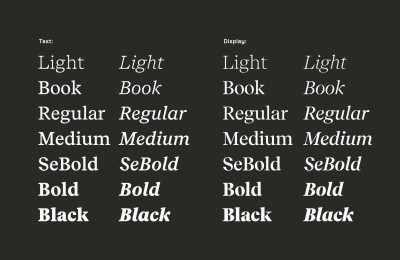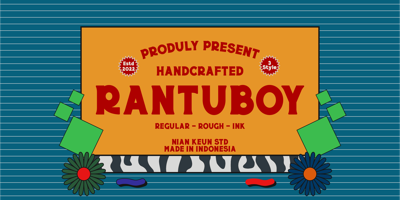Choosing Fonts for Logo Design: What to Consider
Choosing Fonts for Logo Design: What to Consider
Your logo's typography can make or break your brand identity. The right font communicates your values, personality, and professionalism at a glance. The wrong one undermines everything you're trying to build. Here's what you need to consider when choosing fonts for logo design.
Understanding Your Brand First
Before browsing fonts, you need clarity about your brand. Typography should reflect who you are, not just what looks cool today.
Define Your Brand Personality
Is your brand playful or serious? Traditional or innovative? Luxury or accessible? Your font choice must align with these characteristics. A law firm using a whimsical script sends the wrong message, just as a children's toy brand using rigid geometric fonts feels off.
Know Your Audience
Who are you trying to reach? A font that resonates with teenagers won't work for corporate executives. Consider your audience's expectations, preferences, and the context where they'll encounter your logo.
Consider Your Industry
While breaking conventions can work, understanding industry norms helps you make informed decisions. Tech companies lean toward clean sans-serifs for modernity. Luxury brands favor elegant serifs for sophistication. These patterns exist for good reasons.
Key Font Characteristics to Evaluate
Legibility at All Sizes
Your logo needs to work on business cards, billboards, social media avatars, and everything in between. Test your font choice at extreme sizes—tiny and massive.
Some fonts look gorgeous at large sizes but become illegible when small. Others lack impact when scaled up. Your logo font must maintain clarity and character across all applications.
Scalability and Detail
Avoid fonts with intricate details or thin strokes that disappear when reduced. Logo fonts should remain recognizable even at thumbnail size. Simple, bold letterforms typically scale better than delicate, ornate ones.
Timelessness vs Trendiness
Trendy fonts date quickly. What looks cutting-edge today might look embarrassingly outdated in five years. Unless your brand strategy includes frequent rebrands, choose fonts with staying power.
Classic fonts like Futura, Garamond, or Helvetica remain relevant decades after creation. They're classic for a reason.
Versatility
Your logo font should work across different contexts: print, digital, embroidery, engraving, animation. Overly complex fonts cause problems in certain applications. Consider practical reproduction requirements.
Serif vs Sans-Serif for Logos
When Serifs Work
Serif fonts convey tradition, reliability, and sophistication. They work beautifully for established brands, luxury products, publishing, education, law, and finance.
The small strokes add character and elegance, making serifs perfect when you want to communicate heritage or premium quality.
When Sans-Serifs Work
Sans-serif fonts feel modern, clean, and approachable. They excel for tech companies, startups, minimalist brands, and forward-thinking organizations.
Their simplicity ensures excellent legibility across digital platforms, making them the default choice for screen-first brands.
Display and Script Fonts
Display fonts—decorative typefaces designed for headlines—can work for logos but require careful consideration. They have strong personality but limited versatility.
Script fonts suggest elegance, creativity, or handcrafted quality. However, they're often overused and can look amateurish if not executed perfectly. Use sparingly and choose high-quality scripts.
Custom vs Off-the-Shelf Fonts
The Case for Custom Typography
Major brands often create custom logotypes—unique letterforms designed specifically for them. This ensures complete uniqueness and prevents other companies from using the same font.
Custom typography is expensive and time-consuming but offers unmatched distinctiveness. Consider this for established brands with substantial budgets.
Using Existing Fonts Strategically
Most businesses use existing fonts, and that's perfectly fine. The key is customization—adjust spacing, modify specific letterforms, or combine multiple fonts to create something unique.
Purchasing a commercial font and tweaking it strikes a balance between affordability and originality.
Technical Considerations
Licensing for Logo Use
Not all font licenses permit logo use. Some require special branding licenses. Always verify that your chosen font can legally be used in logos before finalizing your design.
File Format Flexibility
Ensure you can get vector versions of your logo font. You'll need to convert text to outlines for final logo files, but having editable text during the design process is crucial.
Special Characters and Alternatives
Check if your font includes all necessary characters: numbers, punctuation, special symbols. Also review alternate characters and ligatures that might enhance your logo.
Common Mistakes to Avoid
Using Overused Fonts
Certain fonts scream "template" or "amateur." Papyrus, Comic Sans, and Curlz MT are notorious offenders. Even popular professional fonts like Gotham or Proxima Nova appear so frequently that they no longer feel distinctive.
Choosing Based on Personal Preference Alone
Your opinion matters, but it's not the only one that counts. Test your font choices with target audience members. Their perception is what ultimately determines success.
Ignoring Pairing Needs
If your logo includes a tagline or additional text, consider how fonts pair together. The logo font should harmonize with supporting typography across your brand materials.
Forgetting About Black and White
Your logo must work in single colors. Many fonts rely on color or effects to look good. Strip those away—does the typography still work? If not, choose differently.
Testing Your Font Choice
Create Mockups
Place your logo with the chosen font in real-world contexts: websites, business cards, signage, packaging. Does it hold up across applications?
Get Feedback
Show options to trusted colleagues, friends, or focus groups. Listen to their gut reactions and specific concerns. Fresh eyes catch issues you've become blind to.
Live With It
Don't rush the decision. Look at your font choice over several days or weeks. Does it still feel right, or are you having doubts? Trust your instincts when something feels off.
Final Thoughts
Choosing a logo font is both art and strategy. It requires understanding your brand deeply, knowing your audience intimately, and thinking practically about applications and longevity.
Take your time with this decision. Your logo font will represent your brand for years, possibly decades. Getting it right from the start saves costly rebrands and builds stronger brand recognition.
The perfect logo font doesn't shout for attention—it quietly reinforces everything your brand represents, becoming inseparable from your identity over time. That's the goal worth pursuing.




